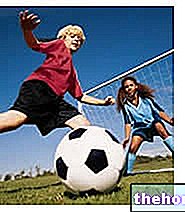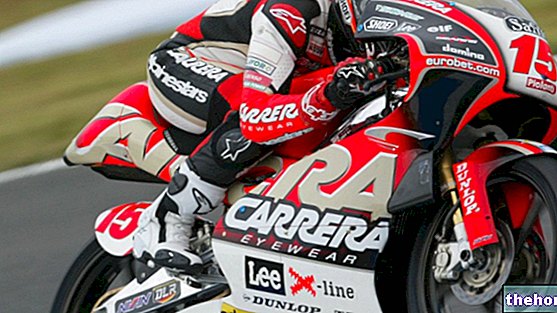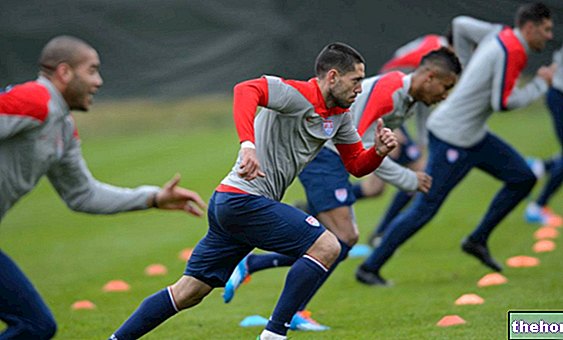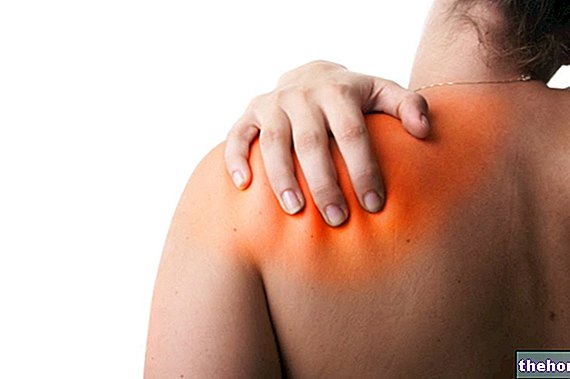Receiving the ball means taking possession of it, stopping it or bringing it under your control.
Often, during the match, the players do not pass the ball immediately, but are forced to stop or block it, to be then in a position to kick it into the goal, or guide it and pass it.

General principles for learning to receive the ball
If the opponent is close, it is necessary to stop the ball and keep it at the feet; if distant, it is possible to dampen the ball so that it can be replayed immediately.
Protect the ball with the body, in order to defend it from the opponent.
Learn to feint with the body before stopping the ball; this deceives the opponent about the intended game.
Stop with the inside of the foot
If the ball hits the ground, stretch your leg forward towards the ball. When the ball is about to come into contact with your foot, pull your leg back to reduce the speed of the ball. The foot must be relaxed, slightly off the ground and with the toe pointing a little upwards: the ball will bounce weakly on the inner surface of the foot and stop not far away.
When the ball arrives stretched at half height, it is possible to make a stop with the inside of the foot. In this case the technique is similar to that used for low-level balls, with the difference that you have to raise the foot to the height of the ball in I arrive.
When the ball falls from above, we must stop it with the inside of the foot immediately after the rebound. Remember to place the supporting leg in front of the point where the ball will bounce, so that, if the stop is not successful, the ball will go against the leg, so it will not bounce upwards. This stop, if performed well, allows you to drive the ball where you want it and already in the condition of being replayed.
Stop or damping with full instep
It is used to receive the balls that arrive almost perpendicular from above. The weight of the body rests on the supporting leg (which has the knee slightly bent). The other leg (the one that will stop the ball) must be lifted towards the incoming ball , with the joint of the foot relaxed. The ball must come into contact with the instep when the leg begins the return movement on the ground. It is a difficult stop to perform, but very nice to see.
Chest stop
The chest stop is used when the balls arrive in a parabola. Keep your pelvis forward and arch your back. At the moment of impact with the ball, you have to bring your chest in so that the ball is dampened and falls in front of your body.
The chest stop can also be used to stop tense half-height shots. In this case you have to dampen the ball with your chest, "taking it in" at the moment of impact.
Thigh stop
The thigh stop is useful for dampening the balls coming from above. Keep the supporting leg slightly bent at the knee, raise the other leg (all flexed at the knee) until the thigh is perpendicular to the body. At the moment of impact, lower the thigh: in this way the ball will meet an «oscillating» surface, able to reduce its speed and make it fall close to the feet.
Head stop
The head stop is rarely used because it is quite difficult to perform. Position yourself with your legs apart in an anteroposterior direction and slightly bent at the knee. Before receiving the ball, you have to get up on your toes: when the ball is about to hit your forehead, you have to push your knees forward, tilting your upper body in relation to your hips.
Fundamental principles for performing a stop well
- The body must always face the direction the ball is coming from.
- The part of the body (example: foot, chest, thigh, or head) that is used to make the stop must be retracted when there is contact with the ball.
- The area of the body that stops the ball should be relaxed and not stiff.
- Before coming into contact with the ball it is useful to do a small jump: this allows you to have the body slightly off the ground and the joints relaxed.
Common mistakes in making a stop
If the pupil performs an inside foot stop and the ball bounces far away, he may have missed the timing of the movement, or he may have kept the joints of the foot (or knee) too rigid. In this case the solution could be to make the stop stop with slow speed It is very important to understand if the supporting leg is being used correctly.
If the ball does not go in the desired direction, there could be a proprioceptive problem, i.e. the boy is unable to orient his foot parallel to the ground and perpendicular to the direction of the ball.
In the chest stop we must train the pupil to observe the ball's parables well and perform the technical gesture correctly.
BALL GUIDE
Driving the ball means making a series of self-directed passes to maintain possession of the ball or conquer spaces.
The ball can be guided from the instep, the inner instep, or through the outer instep. In the first case, the conduction of the ball is straight and is performed by hitting the ball in the upper part of the foot, between the base of the joint. metatarsal and articular arch of the ankle. The tip of the foot points downwards and the knee remains constantly parallel to the longitudinal axis of the body.
In the case of internal instep conduction, the ball is struck through the medial part of the foot, between the base of the big toe and the internal malleolus. During the run, the foot of the kicking leg is rotated slightly outwards with respect to the axis longitudinal of the body. The foot is relaxed and with the toe pointing downwards, the trunk is erect. The arms support the run. The gaze must be directed both towards the ball and towards the playing field.
The conduction of the ball of the outer instep is carried out by hitting the ball through the outer edge of the instep, which, when the ball is touched, is turned inwards, while the knee approaches the longitudinal axis of the body. Thanks to a greater adaptability of the foot to the ball, the latter can be guided with a larger surface than the outside foot.
The external instep is certainly the fastest and gives rise to greater guarantees for ball control.
BALL DRIVING EXERCISES
Tactile and proprioceptive exercises: make many touches of the ball to manage the contact force.
Direction errors: there may be an error in the positioning of the joints, or in the choice of the way to conduct the ball. In this case it is necessary to verbalize the sensations that the pupil feels.
Other tutorials:
- slalom courses defined or to be invented;
- driving in traffic, inside a delimited space, with the players who each drive their own ball;
- driving in traffic with players disturbing the owners of the ball;
- conducting the ball with a chasing opponent;
- guiding the ball with an opponent placed in front who accompanies passively.
Other articles on "Football Technique"
- Football technique
- Football, technique



























